The constantly changing realm of media design necessitates ongoing attention and adjustment. Maintaining a solid online presence, communicating effectively with your audience, and remaining one step ahead of the competition requires being current on design trends, platform updates, and user preferences.
Users have come to demand new and aesthetically pleasing content on social media platforms, which are very competitive. Staying current with design trends increases audience engagement by helping you grab and hold their attention. The shifting aesthetics and technological advancements of each age are reflected in the major evolution of design elements across time.
Design has undergone a steady evolution, from the rich ornamentation of the Victorian period to the crisp lines and purity of modernism. Responsive web design, simplicity, and user-centric interfaces became the norm as a result of the digital age. Furthermore, the use of animation, 3D components, and augmented reality has further pushed the limits of design. Modern design is characterized by the combination of historical traditions and cutting-edge technology, resulting in a dynamic and diverse landscape that responds to our constantly changing cultural and technical environment.
- The Importance of Design in Social Media
- Design Elements that Defined the Past
- Dominant Themes for 2024
- a. Color Trends: Exploration of the color palettes that are resonating in 2024.
- b. Typography: The fonts that are capturing attention and why.
- c. Imagery & Illustrations: The shift towards more authentic images or any dominant illustration styles.
- d. Animation & Motion Graphics: How these elements are being integrated and to what effect.
- The Rise of Interactive Elements
- Platform-Specific Design Trends
- a. Instagram: Noteworthy design shifts in Stories, Posts, and Reels.
- b. TikTok: How design elements play a role in this video-dominated platform.
- c. Facebook & Twitter: Evolution of design elements in these classic platforms.
- d. Emerging Platforms: Any new platforms that have distinctive design trends.
- The Role of User-Generated Content (UGC):
- Challenges & Opportunities:
- Conclusion
- Author’s Bio
The Importance of Design in Social Media
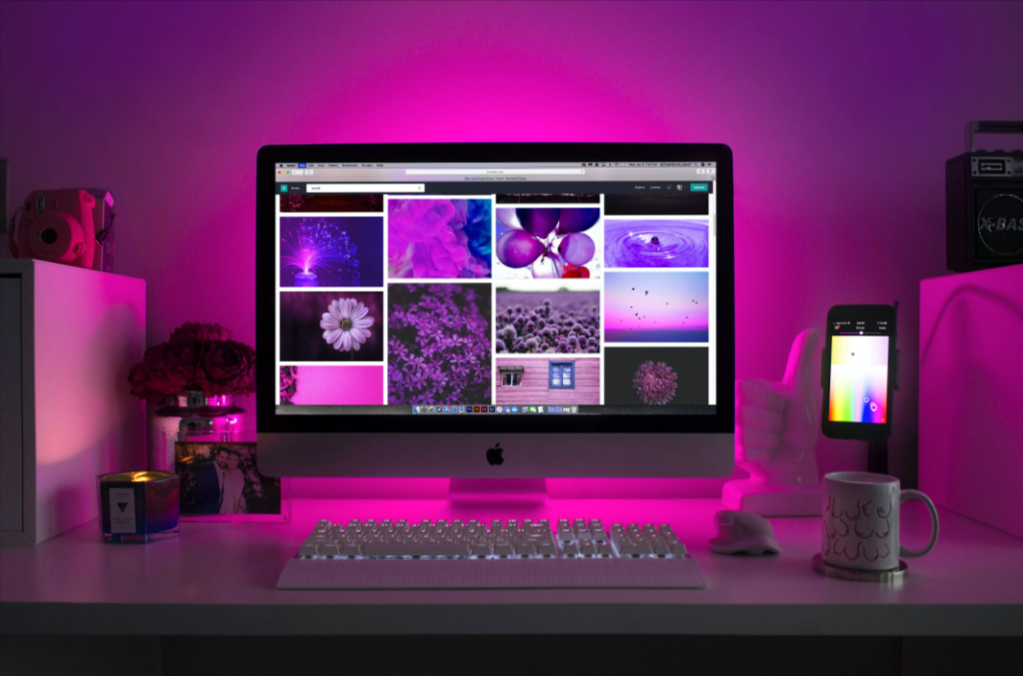
Designecologist | Pexels
Visuals make up 93% of all of our communication. Our brains process visual clues more quickly than they do words. Text-based material performs less well than graphic content for this reason. Statistics show that a distinctive hue increases brand awareness by 80%; thus, colors and other captivating graphic design trends are important in this modern realm.
By grabbing interest, following graphic design trends, delivering information, and eliciting emotions, visuals play a crucial role in user engagement. Images and videos are frequently the first things that consumers notice because they naturally attract attention. High-quality images not only improve the aesthetic appeal of content but also aid in understanding and memory. They have the ability to arouse feelings, tell a story, or deliver insight more successfully than text alone. A pleasant user experience is produced by well-selected images, which keep users on a social media site or website longer, motivate interaction, and increase user engagement.
Design plays a crucial role in brand recognition and consistency by serving as the visual foundation of a brand’s identity. Elements such as logos, color schemes, typography, and graphic styles convey a brand’s personality and values. Consistency in design across various platforms and materials fosters familiarity and trust among the audience. When consumers consistently encounter a brand’s distinct design elements, they are more likely to recognize and remember that brand. This recognition leads to increased trust, loyalty, and a strong brand presence in the market, making design a cornerstone of successful branding and marketing efforts.
Design Elements that Defined the Past
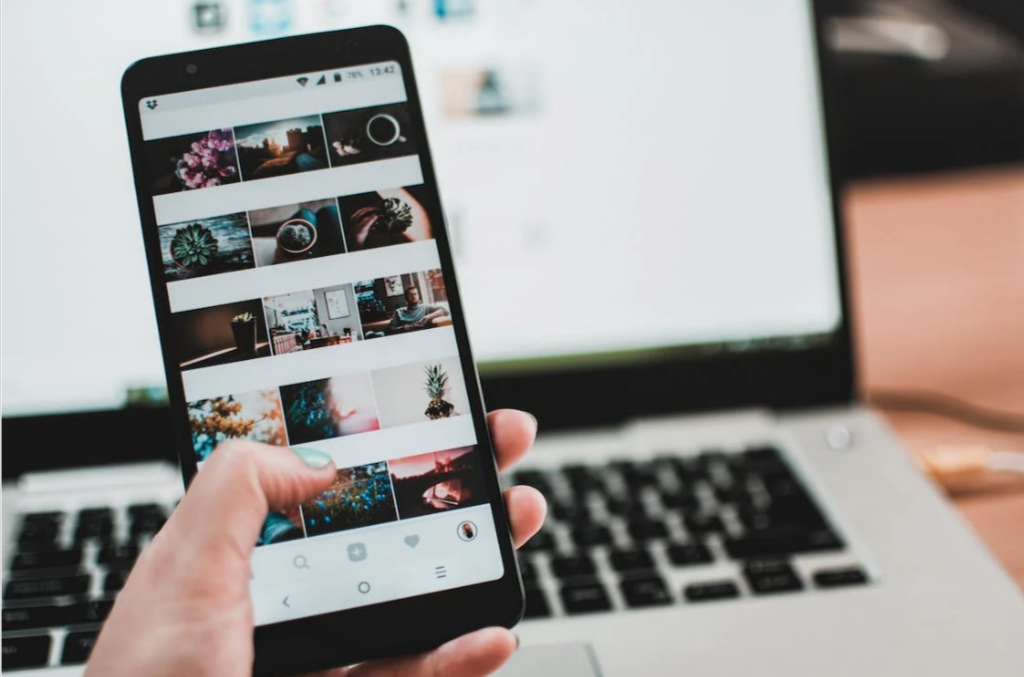
Lisa Fotios | Pexels
Several graphic design trends dominated the digital world between 2020 and 2023. The popularity of dark mode interfaces is due to both their eye-friendly design and low energy consumption. Neomorphism is the reason behind adding more depth to digital designs because of its aesthetic, typified by supple, realistic 3D features.
Simple, usable design that emphasizes minimalism and cleanliness continued to rule. The emergence of natural and hand-drawn features, as well as micro-interactions, also improved user engagement. Growing interactive storytelling and video content reflects the trend toward more immersive internet experiences. Nevertheless, the context of these changes goes beyond the idea that the design landscape is ever-changing.
So what are we looking forward to in the next year?
Dominant Themes for 2024
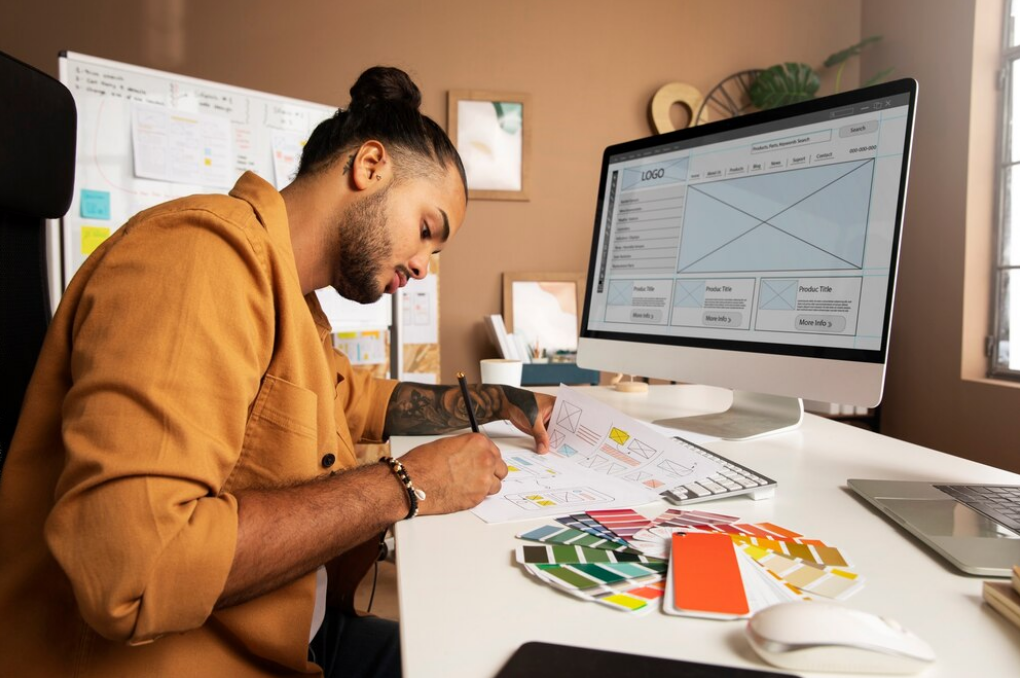
Photo from Freepik
a. Color Trends: Exploration of the color palettes that are resonating in 2024.
We often use colors such as red and blue. However, in this generation, the use of color in design has changed dramatically. In 2024, bright, striking color schemes are making a big impression, showing a desire for brightness and vigor. Mostly, the natural colors that emphasize ecology and an attachment to nature are still in style. Gold and silver metallics will still be utilized to offer a hint of class and sophistication. Monochromatic designs, especially those with blue and green tones, impart a sense of peace and tranquility. Retro-inspired palettes and gradients are also making a comeback, showing a nostalgic reference to the past. Overall, the color schemes of 2024 will be dynamic and diversified, allowing designers to select from a wide range of options for producing visually arresting and emotionally stirring experiences.
b. Typography: The fonts that are capturing attention and why.
We use this typography as one of the most essential types of graphing design in any other project. Typography is a constant and important component of design and communication that is always changing to grab attention and effectively communicate ideas. Bold, striking typefaces like “Bebas Neue” and “Roboto ” have grown in favor recently because of how easy they are to use and how well they stand out in a variety of applications. Additionally, hand-lettered and custom fonts are popular because they add a distinctive touch to advertising and design initiatives. These fonts are grabbing attention by improving the aesthetic appeal and intelligibility of text in a constantly expanding multimedia and print world anchored to their capacity to strike a balance between heritage and innovation.
c. Imagery & Illustrations: The shift towards more authentic images or any dominant illustration styles.
There has been a clear shift toward authenticity and relatability in the world of graphics and pictures. Genuine, real-life experiences photographed candidly are replacing outdated stock images with planned, overused notions. To appeal to a wider audience, brands and producers are using imagery that represents diversity, inclusivity, and daily life. Additionally, hand-drawn and digitally created graphics are becoming more popular since they provide a novel, distinctive viewpoint that stands out in a world overrun with generic images. This trend for truth and originality in graphics and imagery emphasizes how crucial it is to establish a more intimate and sympathetic connection with readers. You can do this by exploring different image editing services that you can access online. Most of these platforms are free, so you don’t have to fret or be scared of using them.
d. Animation & Motion Graphics: How these elements are being integrated and to what effect.
Information can be presented excitingly and engagingly by incorporating motion graphics and animations into a variety of media formats. They aid in capturing the audience’s interest and conveying complicated ideas succinctly and attractively in marketing and advertising. Animations improve the user experience by incorporating interactive features and mesmerizing real-life movements. Animation brings characters and environments to life in the entertainment business, resulting in captivating narrative experiences. In general, the incorporation of animation as well as motion graphics deepens and increases the interaction of material, increasing its allure and memorability across a variety of applications, from social media campaigns to educational videos.
The Rise of Interactive Elements
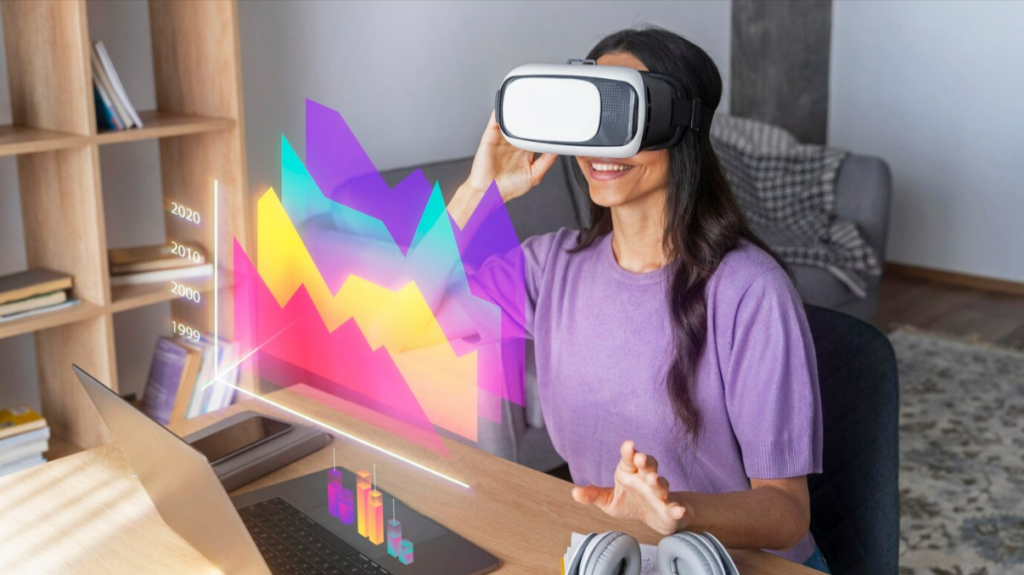
Photo from Freepik
AR (augmented reality), VR (virtual reality), and other multimedia capabilities are significant because they can increase user engagement and provide immersive experiences in social media posts. With the aid of these technologies, brands and individuals can now produce engaging, interactive narratives that transcend the limitations of static material. For instance, AR filters make user-generated content entertaining and shareable, while VR immerses consumers in completely new virtual settings. Longer user dwell durations, stronger bonds, and greater brand loyalty are all facilitated by these interactive aspects. They not only draw attention, but they also give users the tools to engage with the material directly, making for a memorable and richer social media experience.
These graphic design trend ideas have been successfully used by several brands and campaigns. The “A Symbol of Welcome” campaign from Airbnb used genuine host houses and varied visitors in visuals that connected with their international audience. Nike’s “You Can’t Stop Us” campaign used bold lettering and eye-catching visuals to draw attention and deliver a potent message of teamwork through athletics. Users of Burger King’s augmented reality (AR) Instagram filters, “The Delayed Whopper,” could feel the excitement of waiting for a flame-grilled burger to arrive, which increased interaction and sparked cravings. The “Place” software from IKEA revolutionized buying by allowing buyers to see equipment in their dwellings before making a purchase. These illustrations highlight how organizations may effectively use design trends to engage customers and improve marketing plans.
Platform-Specific Design Trends
a. Instagram: Noteworthy design shifts in Stories, Posts, and Reels.

cottonbro studios | Pexels
Instagram’s stories, posts, and reels have seen noticeable design changes. With the addition of tools like polls, questionnaires, and countdowns, stories have grown more interactive, engaging, and participative. With an accent on authenticity, posts are moving toward cleaner, more minimalist styles that prioritize realistic pictures and accessible information over excessively manipulated visuals. Reels, Instagram’s take on the short video tendency, emphasizes brief storytelling and frequently includes quick, attention-grabbing animations along with text overlays. These design adjustments represent Instagram’s ongoing dedication to user interaction, authenticity, and the adaptability necessary in the rapidly shifting social media landscape. Hence, you should always make your graphic designs catchy, short but sweet, authentic, and minimalist as much as possible.
b. TikTok: How design elements play a role in this video-dominated platform.
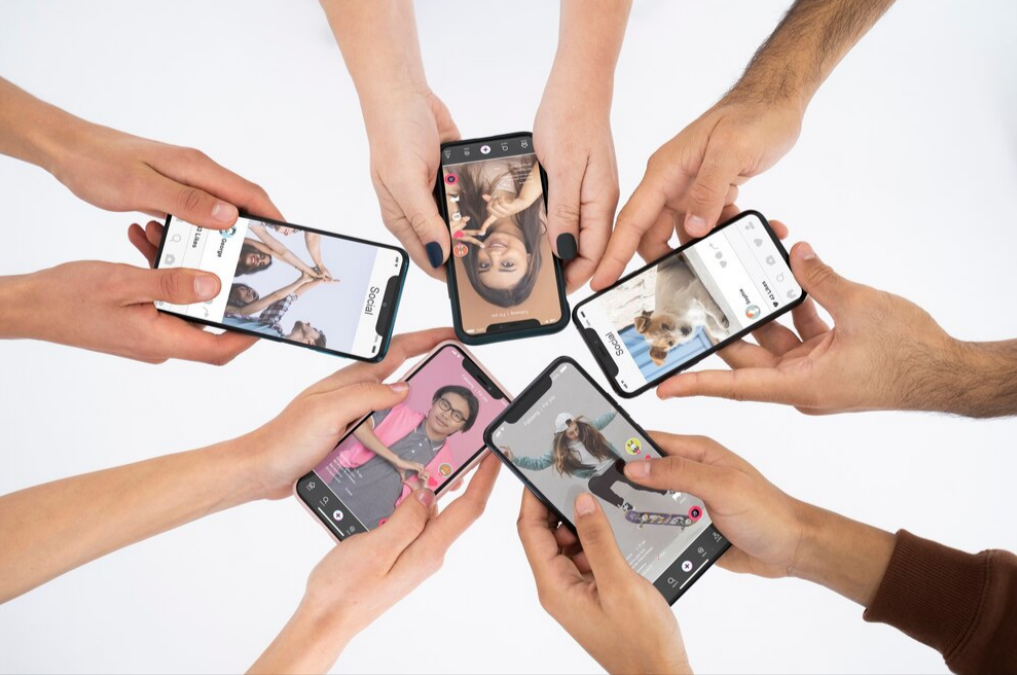
Photo from Freepik
TikTok values design so much as a site that focuses primarily on videos and is renowned for its inventive and immersive content. The short-video posting app encourages users to create visually appealing videos with ease because of the platform’s user-friendly design and the convenient editing instruments, filtration, and effects at their fingertips. The TikTok algorithm favors content that grabs users’ attention quickly; therefore, eye-catching graphics are essential. TikTok videos are distinguished because of unique transitions, colorful text overlays, entertaining content, and captivating animations. In addition, the user base of TikTok thrives on challenges, trends, and viral audio, so users must modify their message design to meet these overarching themes. In short, TikTok’s design features give users the freedom to engage with a huge, diversified audience while also expressing themselves artistically. It is in you to find your niche and design your content based on what your audiences want to see.
c. Facebook & Twitter: Evolution of design elements in these classic platforms.
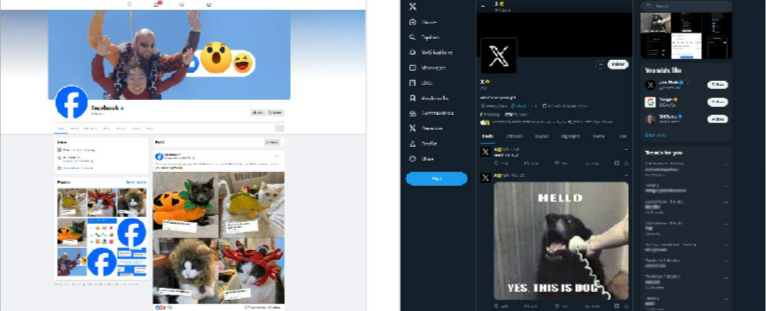
Social media sites like Facebook and Twitter have improved their user-friendliness and relevancy over time. Facebook has changed to a simpler, more user-friendly appearance that emphasizes larger photos and videos. A desire for more constant real-time content can be seen in the development of tools like live streaming on Facebook and Stories. Twitter has embraced audiovisuals by allowing tweets to include bigger images, videos, and GIFs. Overall, both platforms keep improving their visual appeal to accommodate customer demands for multimedia, creative expression, and in-the-moment interaction. So, you must always strike a balance between messaging and creativity and aim to create content that satisfies not only the eyes but also users’ hearts and minds to create interaction and maximize the platforms’ purpose of building a community. You can start with vibrant colors if you want to follow the standards, but if you want to cater to a modern audience, you can explore monochromatic posts with social commentary or witty ideas that will go straight to their emotions.
d. Emerging Platforms: Any new platforms that have distinctive design trends.
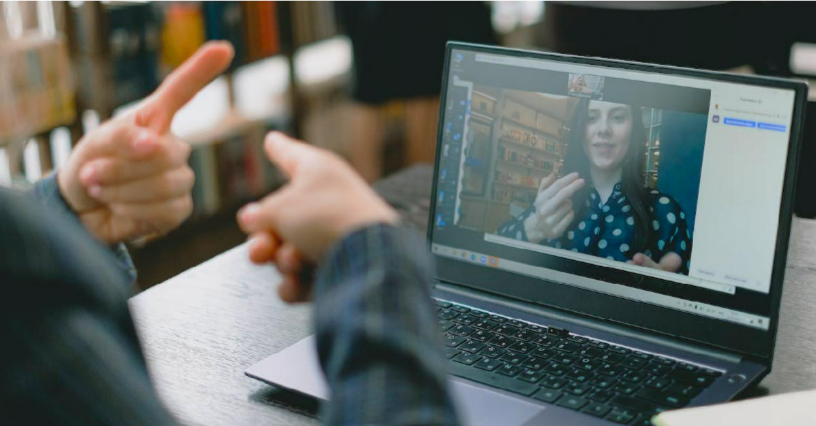
New social media networks frequently have particular design patterns that appeal to certain target markets. Platforms like Club and Discord put a priority on audio-first interaction, emphasizing natural speaking interfaces and seldom utilizing text-based content. Additionally, apps like Triller, BeReal, and Threads have helped users be more open and gain popularity. These apps inspire creativity with their distinctive editing tools and virality-promoting algorithms. As fresh networks continue to appear, they bring innovative design concepts that upend the status quo and transform how we communicate and exchange material online. With the upcoming platforms dominating the world, it is important to equip yourself with the right editing apps to prepare for the high-demanding audiences. You can start by asking yourself what you need, such as a background remover to help you improve your photos, a color palette scheme for brand identity, a logo maker, and more. AI-powered logo makers like Looka empower anyone to create a professional logo, no design skills required.
The Role of User-Generated Content (UGC):
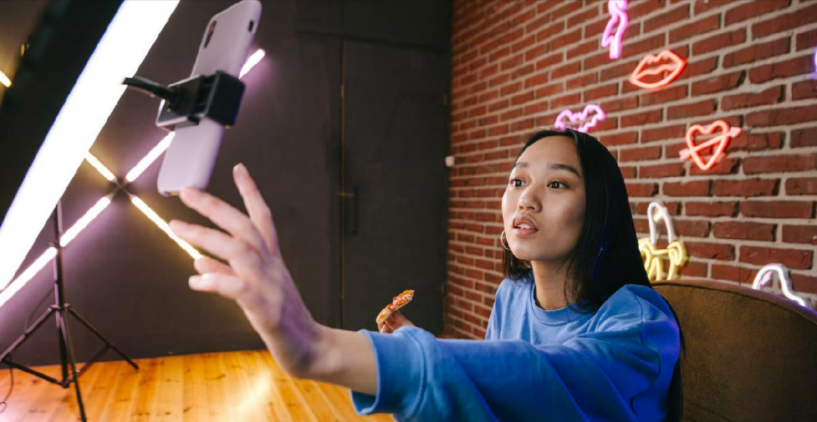
Ivan Samkov | Pexels
Content creators are famous to this day. In order to boost their image’s authenticity and reliability, brands are increasingly integrating their produced content into their advertising strategies. To reach a wider audience, they can do this by using the images, videos, and reviews that their clients have produced. Professional designers are concentrating on developing visual guidelines, templates, and styles that meld UGC into brand looks. In a time where authenticity is highly valued, UGC not only boosts confidence as well as participation but also serves as a valuable source for new, real-time content that appeals to consumers. This trend toward including UGC illustrates how design is changing and how crucial it is to the development of contemporary branding strategies.
A brand’s online presence can be strengthened through the strategic combination of user-generated content (UGC) and branded content. By enabling a two-way dialogue between the business and the viewers, this fusion promotes engagement and trust. Together, branded content and user-generated content (UGC) help brands stay true to who they are and what they stand for while also gaining insight into the open, honest experiences and viewpoints of their audience. By doing this, the final product feels more organic, relatable, and in line with the changing expectations of contemporary consumers.
Challenges & Opportunities:

fauxels | Pexels
Keeping up with quickly changing trends is extremely difficult for designers. Given how quickly design tools and approaches evolve, one significant barrier is the requirement for ongoing learning and adaptation. It takes time and money to spend on education and the development of skills to stay current. To ensure that their work is ageless, designers must also strike a balance between current aesthetics and fundamental design principles. The strain of always coming up with new ideas while also satisfying client needs can be exhausting and may even contribute to creative burnout. A complicated problem, keeping up with the most recent design trends frequently requires a comprehensive comprehension of customer needs and societal shifts. Designers must find a fine balance in this fast-paced market between remaining trendy and keeping their distinct design voice.
The changing graphic design trends provide opportunities for both businesses and individual artists. Brands can engage with a contemporary, tech-savvy audience and project an air of innovation and relevancy by being on-trend. It improves their capacity to connect with and resonate with customers, which eventually results in greater customer loyalty and greater market share. These trends provide opportunities for independent producers to present their talents and originality in line with the newest fashions. They can make use of new platforms and tools to expand their audience, establish their brand, and even monetize their material. Opportunities for both collaboration and entrepreneurship abound in this dynamic design environment, providing brands and creators with a chance to leave a lasting impression on a constantly evolving digital landscape.
Conclusion
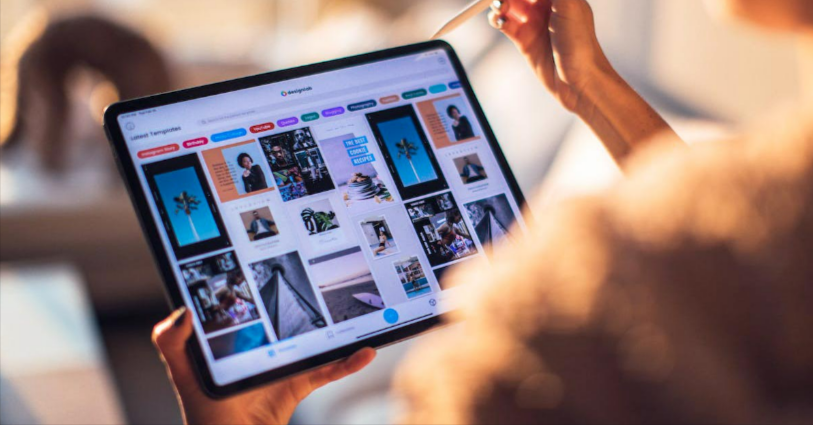
Roberto Nickson | Pexels
In conclusion, the dynamic, quick-paced society we live in is reflected in the constantly changing nature of graphic design trends. As we all know, it serves as a reminder that aesthetics is a living, breathing thing that shifts in response to societal, technological, and cultural changes. This ongoing growth presents designers with a constant challenge to stay flexible and creative while also providing limitless opportunities for artistic expression. It also emphasizes the significance of striking a balance between modern aesthetics and time-honored design ideas.
Hence, as a designer on the social media globe, you have to apply innovation and adaptability at all times. These qualities are pillars of utmost significance to remain relevant amidst all the changes that might happen. Platforms and trends that are popular today can be outmoded tomorrow; therefore, it’s critical to adapt methods and materials to stay current.
Overall, as a designer in the graphic design industry, you should never stop learning and experimenting with new design trends. The digital scene is rapidly changing. Thus, standing still is not a possibility. You need to make a commitment to developing new skills, staying current with design tools, and adjusting to changing consumer tastes. While ensuring that their visual identity stays fresh and exciting. Everything still depends on you, so always aim to be better every single day.
Author’s Bio
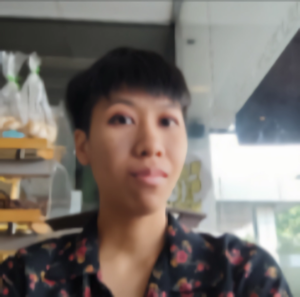
Andrea Locsin, Removal.AI
Andrea is an illustrator and graphic designer with a Bachelor of Fine Arts in Digital Media Arts degree.
Andrea’s love for color and animation is one of many major inspirations when creating artworks and graphics.

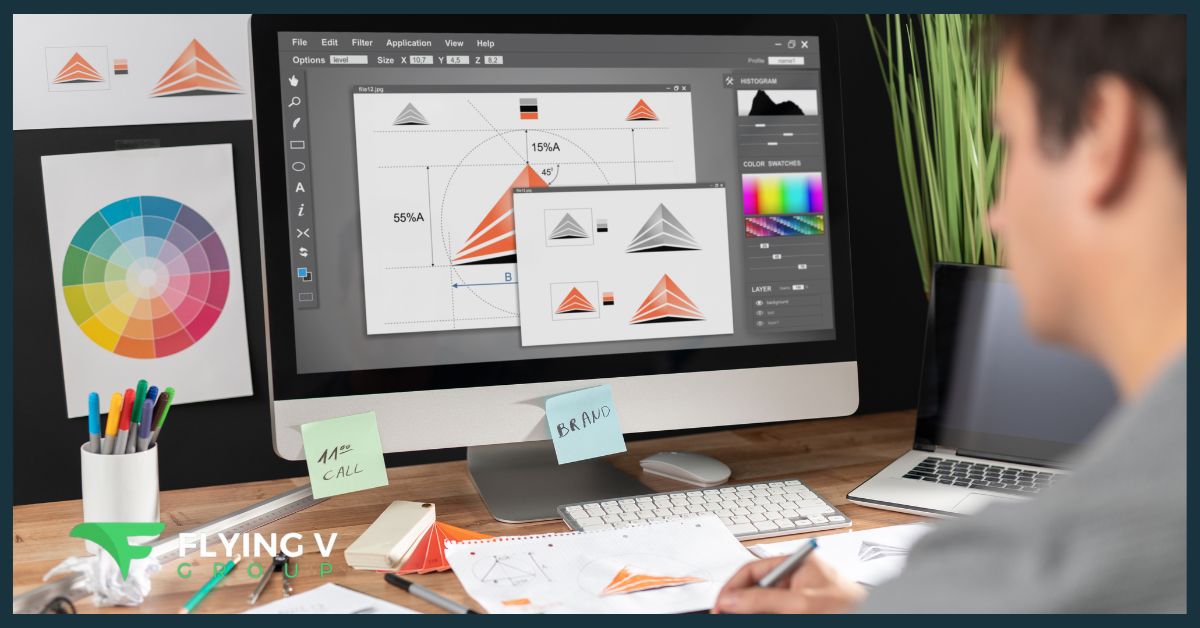

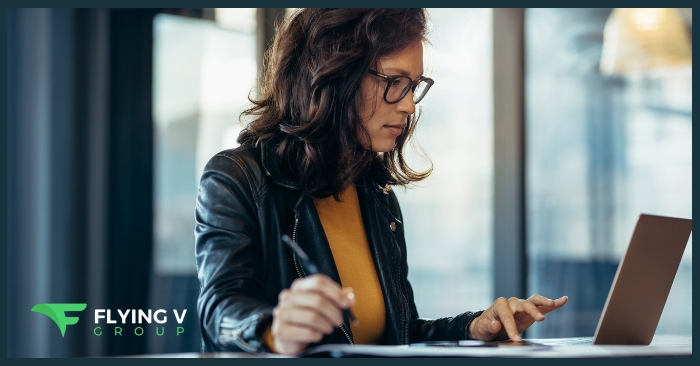


0 Comments